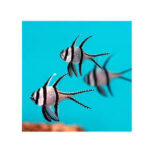Dragons have long been a central figure in mythology, folklore, and cultural symbolism across the world. They are often depicted as powerful, otherworldly beings associated with natural and cosmic forces. From the fiery dragons of European legends to the celestial dragons of Chinese mythology, these creatures are frequently linked to storms, earthquakes, eclipses, and even the movement of celestial bodies. This article explores how dragons are connected to various natural and cosmic phenomena, examining their role in mythology, scientific interpretations, and cultural significance.
Dragons and Natural Phenomena
1. Dragons as Lords of Storms and Rain
In many cultures, dragons are believed to have control over weather patterns, especially rain and storms. In Chinese mythology, the dragon is a symbol of water and is responsible for bringing rain to nourish the land. The four Dragon Kings—Ao Guang, Ao Qin, Ao Shun, and Ao Run—are said to rule over the four seas and control rainfall. During times of drought, people would perform rituals and prayers to dragons to summon rain.
Similarly, in Hindu mythology, the serpent-like dragon Vritra is known as a demon of drought, withholding rain until defeated by the god Indra, who releases the waters back to the earth. This theme of dragons controlling water reflects the dependence of ancient societies on rainfall for agriculture and survival.
2. Dragons and Earthquakes
In Japanese mythology, the giant catfish Namazu is often blamed for earthquakes, but in some versions, dragon-like creatures play a role. The idea that dragons live underground and cause tremors when they move appears in several traditions. For example, in Norse mythology, Jörmungandr, the World Serpent, encircles the earth, and its movements are said to trigger earthquakes and tsunamis.
The connection between dragons and seismic activity may stem from ancient attempts to explain natural disasters. Before modern geological science, people often attributed earthquakes to the actions of giant creatures lurking beneath the surface.
3. Dragons and Volcanic Eruptions
Fire-breathing dragons, common in European legends, have often been linked to volcanic activity. In some folklore, dragons live inside mountains and breathe fire, explaining why volcanoes erupt. The legend of Mount St. Helens in Native American mythology describes a great battle between two powerful beings, interpreted as dragon-like figures, causing the mountain to explode in fire and ash.
This association may have arisen from the visual similarities between dragons and volcanic eruptions—both unleash destruction with streams of fire, smoke, and molten rock.
Dragons and Cosmic Phenomena
1. Dragons and Solar and Lunar Eclipses
One of the most widespread connections between dragons and cosmic events is their role in eclipses. Many ancient cultures believed that a dragon or serpent was responsible for devouring the sun or moon, leading to temporary darkness.
- In Chinese mythology, a celestial dragon was thought to consume the sun or moon during an eclipse. To drive it away, people would bang drums and make loud noises to scare the dragon and restore the light.
- In Hindu tradition, the demon dragon Rahu is said to swallow the sun and moon, causing eclipses. Rahu was beheaded by the gods, but since his severed head is immortal, it continues to chase the sun and moon, momentarily engulfing them.
- Norse mythology features the wolf Fenrir and his dragon-like siblings, who play a role in devouring celestial bodies at the end of time.
These myths reveal how ancient civilizations interpreted eclipses before scientific explanations were available.
2. Dragons and the Milky Way
In some cultures, dragons are linked to the Milky Way, often representing celestial rivers or cosmic serpents. In Chinese astronomy, the Azure Dragon of the East is one of the four major constellations, symbolizing spring and renewal. The presence of dragons in the night sky emphasizes their role as cosmic guardians.
Similarly, in Mesoamerican mythology, the feathered serpent god Quetzalcoatl is connected to the heavens, symbolizing the link between the earthly and celestial realms.
3. Dragons and the End of the World
Many myths describe dragons as cosmic beings that play a role in apocalyptic events. In Norse mythology, Jörmungandr will rise from the sea and battle the god Thor during Ragnarok, the end of the world. This cataclysmic event includes earthquakes, floods, and a final confrontation between cosmic forces.
In the Book of Revelation, a dragon symbolizes chaos and destruction in the battle between good and evil. These stories depict dragons as forces that shape the fate of the universe.
Scientific and Cultural Interpretations
While dragons are mythical, their associations with natural and cosmic events suggest that ancient societies used these creatures to explain the unknown. Before the discovery of weather patterns, tectonic activity, and astronomical cycles, attributing such events to mighty dragons provided a sense of order and understanding.
Even in modern times, dragons remain powerful cultural symbols, appearing in literature, films, and artistic representations. Their deep-rooted connections to nature and the cosmos reflect humanity’s enduring fascination with the mysteries of the universe.
Conclusion
Dragons have played a significant role in explaining natural disasters, celestial events, and the forces that shape the world. From controlling storms and earthquakes to influencing the stars and eclipses, these legendary beings have been woven into the fabric of human mythology for centuries. Whether seen as divine protectors or destructive forces, dragons continue to captivate the imagination, bridging the gap between nature, the cosmos, and human storytelling.










